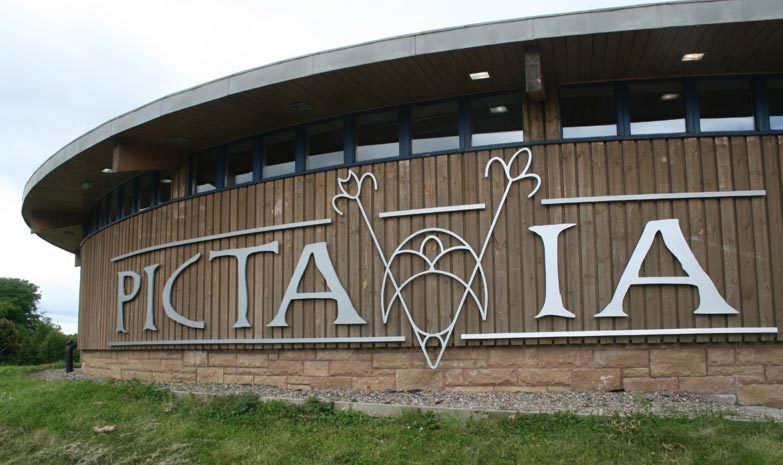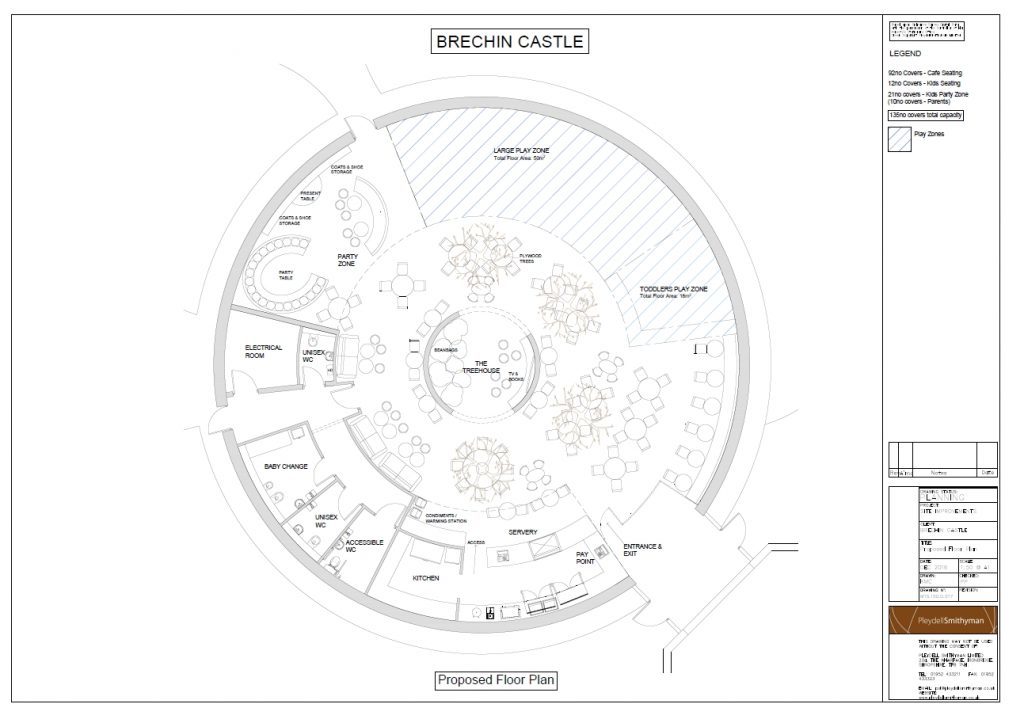Its halls once rang with the battle cries and tales of Scotland’s ancient tribes, before it too was consigned to history.
But a former Angus tourist attraction could come back to life with the clamour of face-painted soldiers.
The £1.2 million Pictavia Visitor Centre opened in 1999 to tell the story of the Picts, who left hundreds of artefacts, standing stones and houses deep in the Angus countryside.
The former Angus Council attraction closed in 2014 as the failing centre was said to be “doomed from the start”.
New owner Brechin Castle Centre Ltd has said families visiting its garden centre and shops next door are generating “demand” for a soft play centre.
And an “exciting and unusual” treehouse play area will serve a wave of small invaders, according to agents Pleydell Smithman.
Consultant Kathryn Farden said the change of use would directly employ six people, with more jobs possible for local suppliers as a consequence of new business.
She said: “The site has become an established part of the local community and provides an important service for tourists to the wider east coast area.
“Pictavia occupied a building immediately to the south-west of the main garden centre until closing in October 2014 due to insufficient visitor numbers to maintain viability.
“It is an attractive building and an alternative use needs to be found to bring it back into use.
“Garden centres have developed over time to offer a wide range of products and services from their sites over the years.
“Attracting families to garden centres is important as the traditional garden centre customer base is changing.
“A demand for soft play has been identified from conversations with existing customers and the large number of families which visit the site.”
Two play zones will be created, one for toddlers and one for older children, both of which will include foam mats, play equipment and ball pit areas.
A coffee shop will be provided within the building to enable parents to purchase food and drinks whilst supervising their children.
Pictavia’s annual operating cost was £37,000 from 2010 to 2014, with only £10,000 in income each year.
The planning department’s decision is due by May 6.
The Picts
As their language and culture was subsumed, little is known about the Picts beyond the artefacts they left behind.
They were first mentioned during the Roman campaigns of the third century AD and merged with the Gaels to form the first Scottish kingdom – Alba – 600 years later.
The invaders coined the name Picti, meaning “painted ones”, to describe a number of unaffiliated tribes.
But the Roman threat seems to have forged the Picts into a coalition, able to resist as well as plunder neighbouring Britons.
When the legion left in the 5th Century, those tribes were well on their way to forming Pictavia, the Pictish kingdom.
The Battle of Dunnichen
Many historians believe modern Scotland would not have existed without one battle in particular.
The battle of Dunnichen, Dun Nechtain, or Nechtansmere helped define a kingdom, with hundreds of scholars having pored over its 1300-year-old mysteries.
It was fought in 685 between a Northumbrian army under King Egfrid against a Pictish army from the Kingdom of Fortriu, led by Bridei mac Beli.
The battle was an epic victory for Bridei’s forces with Egfrid and many of his army slain, freeing Fortriu from Northumbrian overlordship and permanently weakening Northumbrian power in north Britain.
Since the 19th century it was thought the battle was fought around Dunnichen hill near modern Letham, based on the interpretation of local standing stones.
But Historic Scotland told disappointed local historians it could not find enough evidence to legally protect the site in 2012.
Modern historians have put forward a competing locale at Dun Achton in Badenoch – one battle that may never be resolved.

